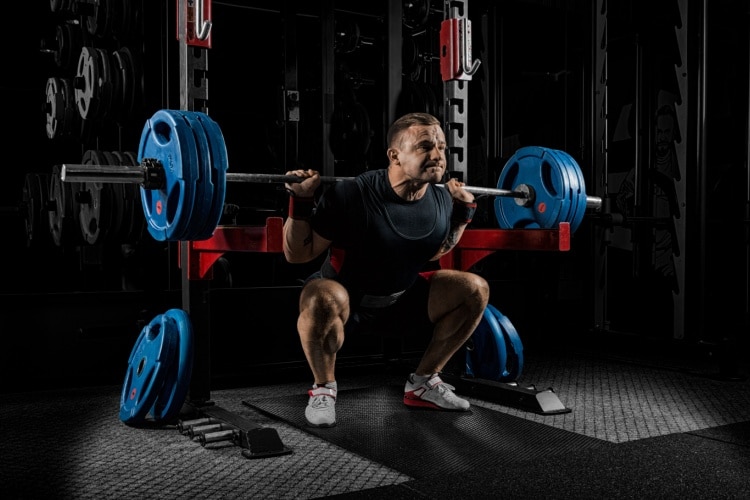How to Do the RKC Plank: Upgrade Your Core Training with Maximum Tension
The RKC Plank isn’t your average plank. It’s not about seeing how long you can hold still and suffer — it’s about creating maximum full-body tension for a short, intense burst of true core engagement.
If you’ve hit a wall with standard planks, or you want to squeeze more benefit out of less time, this is the core upgrade you need.
In this guide, we’ll cover:
- What the RKC Plank is and what makes it unique
- How to execute it properly
- Common mistakes to avoid
- Benefits for bodybuilders and strength athletes
- How to progress and program it for results
What Is the RKC Plank?
“RKC” stands for Russian Kettlebell Challenge — the training system that popularized this aggressive, high-tension version of the standard plank.
The RKC Plank focuses on maximal isometric tension, not passive duration. Instead of holding a relaxed plank for 2+ minutes, you brace every muscle in your body for 10–30 seconds.
Think of it like this: standard plank = endurance, RKC plank = power and control.
Muscles Worked
Primary:
- Rectus abdominis (six-pack muscle)
- Transverse abdominis (deep brace)
- Obliques (stabilization)
Secondary:
- Glutes and hamstrings (posterior chain)
- Lats and scapular stabilizers
- Shoulders and quads (isometric engagement)
This is a full-body contraction, not just an ab hold.
How to Do the RKC Plank (Step-by-Step)
Set-Up:
- Start in a forearm plank position, elbows under shoulders.
- Walk your elbows slightly forward — just past shoulder line.
- Feet close together, glutes squeezed tight.
Execution:
- Brace your core — pull your ribs toward your pelvis.
- Squeeze everything: glutes, quads, fists, abs.
- Imagine pulling your elbows toward your toes (without moving).
- Hold for 10–30 seconds at maximum effort.
Key Cues:
- “Crush the floor” with your arms and feet
- “Rip the floor in half” (elbows toward toes)
- “Brace like someone’s about to punch you in the gut”
Common Mistakes to Avoid
❌ Relaxing During the Hold
Fix: This is not a passive plank. Keep maximal tension throughout the set.
❌ Letting Hips Sag or Rise
Fix: Keep a neutral spine — straight line from shoulders to heels.
❌ Holding Too Long
Fix: Quality > duration. Stop at 30 seconds. If you can go longer, increase tension, not time.
❌ Not Breathing
Fix: Breathe shallow and controlled — don’t hold your breath.
Progressions and Variations
🔹 Standard to RKC Transition
- Start with a regular plank
- Shift elbows forward and engage tension gradually
🔹 Band-Resisted RKC Plank
- Loop a band around your back and anchor to floor or rack
- Adds resistance to brace against
🔹 Plank to Push-Up Position
- Start RKC style, then press into high plank for added upper body work
🔹 RKC Plank March
- Lift one foot at a time, maintaining max tension
- Builds anti-rotational control
How to Program the RKC Plank
For Core Activation:
- 1–2 sets of 10–20 seconds in warm-up
For Strength & Bracing:
- 2–3 sets of 20–30 seconds post-lifting
For Hypertrophy Support:
- Superset with dynamic core moves (e.g. cable crunch, leg raise)
Why Bodybuilders and Lifters Should Use It
- Improves bracing for squats, deadlifts, presses
- Teaches intra-abdominal pressure for injury prevention
- Builds strength without wear and tear on spine
- Time-efficient: huge benefit in 30 seconds or less
- Reinforces total-body tension under fatigue
The RKC Plank doesn’t just build a stronger core — it improves your entire lifting performance.
Final Word: Less Time, More Tension
Forget 2-minute planks with saggy hips and a wandering mind.
The RKC Plank teaches you to create high-quality tension, control your breathing, and reinforce a rock-solid brace — all in under 30 seconds.
Make it a part of your weekly routine, and you’ll feel the difference in every lift that demands posture, power, and precision.
Brace hard. Breathe sharp. Train smart.
🔗 Related Articles:
- The Complete Guide to Core Training for Muscle, Strength, and Stability
- Top Core Training Mistakes (And How to Fix Them)
- Dead Bug: Master Core Control and Spine-Safe Strength
- Core Workouts for Bulking vs Cutting
- The 5 Best Weighted Core Exercises




